Zaouia Sidi Ali El Mekki is located just beyond the summer beach of Ghar el Melh, up a hill overlooking the region’s wetlands, the sea and the coast of Sidi Bou Said in the distance. The marabout, which has been carved into the mountain, is being taken care of by Mohamed and his family. Iheb’s voice echoes in my mind, “those who take care of a zaouia are mostly practicing Sufis (relationalize property1).
A zaouia is a building and institution associated with Sufis in the Islamic world.
” The ritual of maintenance and care can be considered a devotional act in and of itself. Mohamed’s mother, Saida, and his sister, Nadia, both live in Ghar El Melh and take care of the zaouia when Mohamed is working hard in the summers. He tells me that many people visit the zaouia to perform sacrificial rituals of mostly chicken or sheep, of which the meat is then distributed amongst the poor. Parts of the animal are given to Mohamed. While I visit him he is cooking left-over bits of a sacrificed rooster which he will offer to his cats. “This used to happen multiple times a day”. Now, he tells me, he might receive one request a week to sacrifice an animal. It reminds me of a talk I had with his mother while visiting the zaouia earlier that year. “People are too lazy to come up the hill now. They want to drive everywhere directly, park their big cars on the spot, just like they do on the beach. Time just doesn’t work the same way it did. People are constantly in a rush to get back home. Before people would spend days, praying into the night and into the early mornings. Now people barely spend five minutes here. They pop in, read al Fatiha and leave again. To me it feels that for some, visiting the zaouia, is more of a duty than a meaningful spiritual experience.”
Opening Sura in the Koran.
Donations, olive oil, water and a candle, by the shrine of Sidi Ali El Mekki.
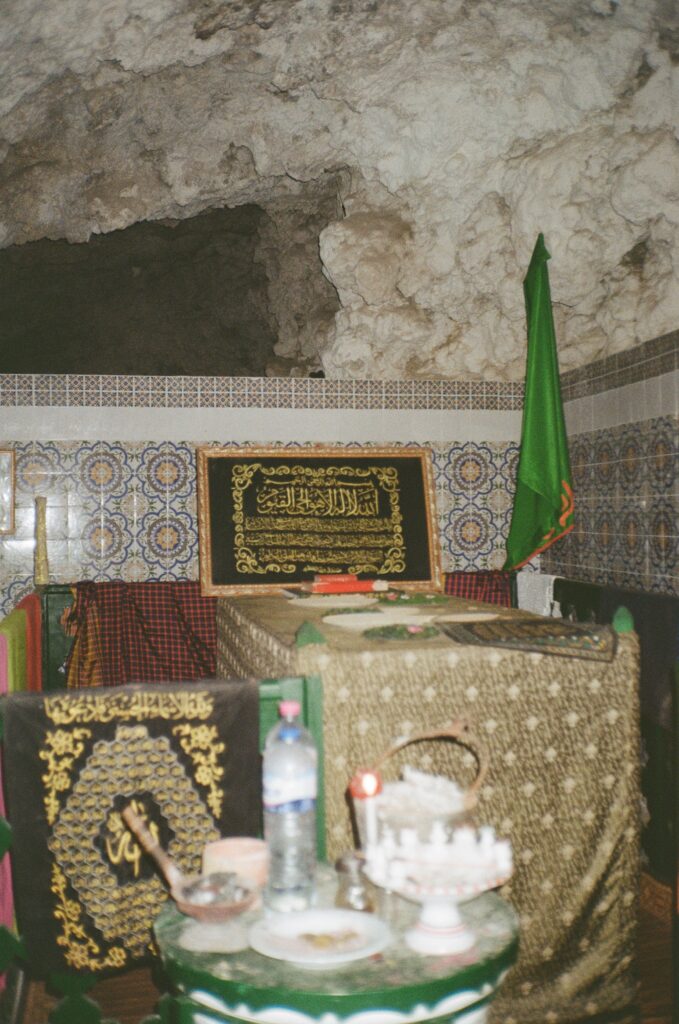

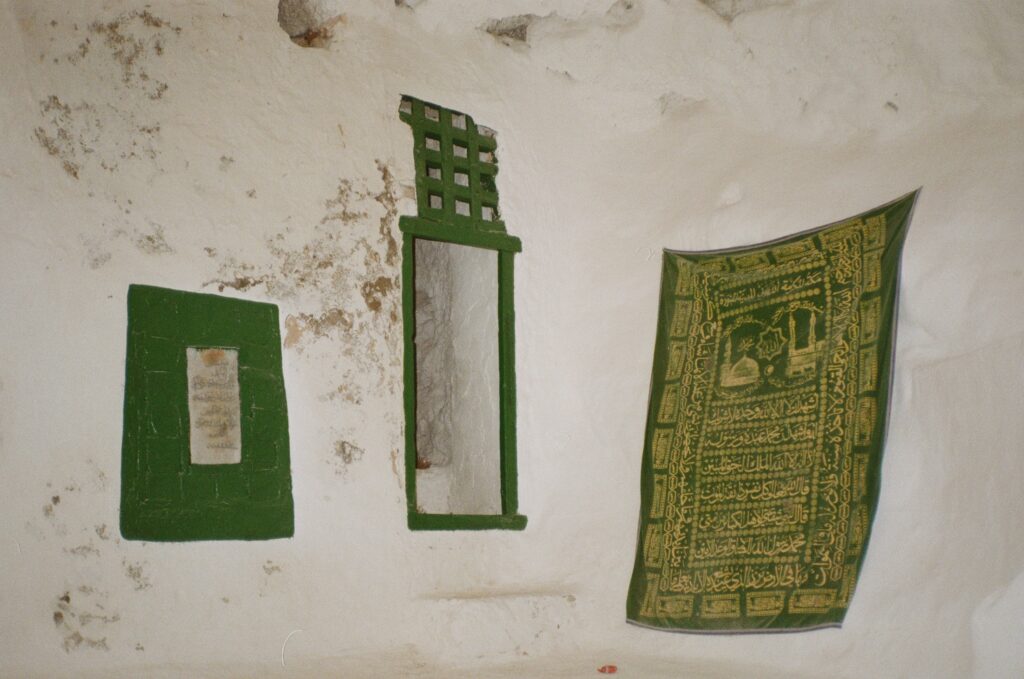
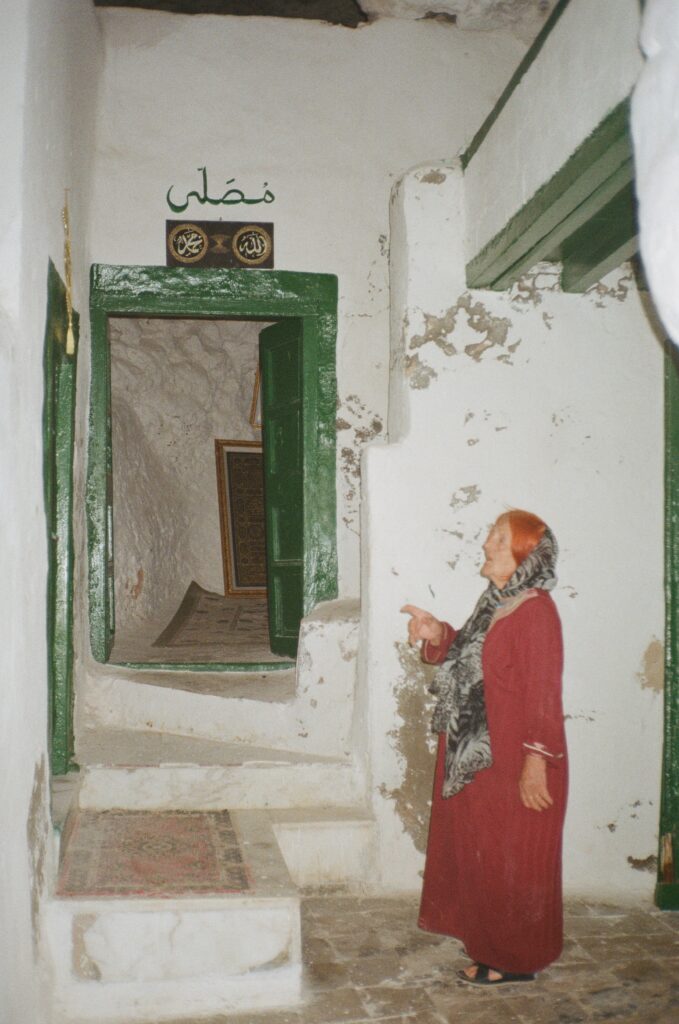

The experience of walking up to the zaouia feels just as important as being in the zaouia itself. While climbing up the hill, I’m overcome with beauty and a sense of humility as I am surrounded by the pine trees, sea views and the orange-red tones in the rocks and sand. It makes perfect sense that the monastery emerged where it did and that it hosted people, over the centuries, searching for a calm and restorative place for meditation and devotion.
Views from the walk up the hill to Zaouia Sidi Ali El Mekki.
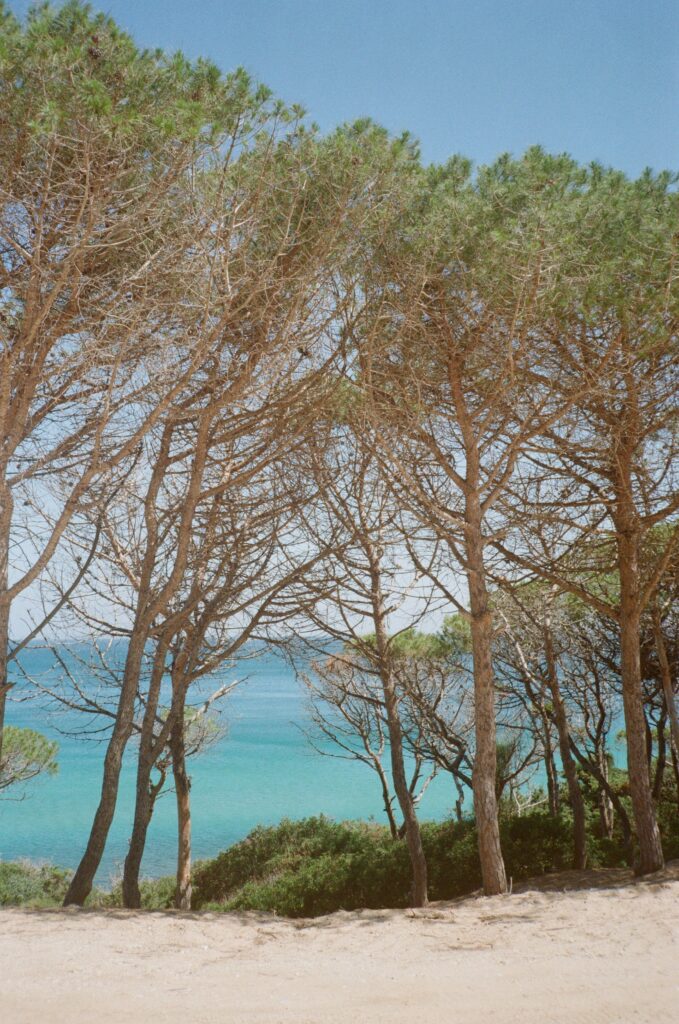

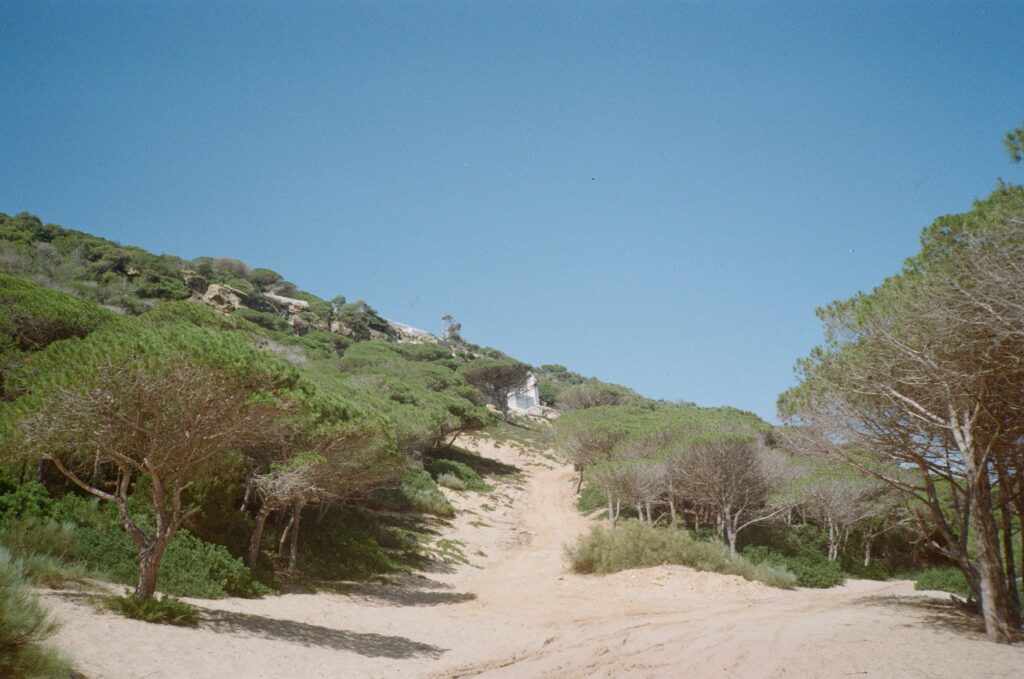
During my visit in the fall, Mohamed showed me the private area of the zaouia where he has built a kitchen, bedroom and Mekhzen.
A room to store food.
He generously offers me to stay there anytime I’d like to visit the zaouia for a longer period. Mohamed goes on to show me the zaouia’s three Majel, which collect the rainwater, and tell me about the tough and dry summers. While the rain remains absent, work does not.
A rainwater cistern.
The summer season is very important for him and many others in Ghar el Melh, as the influx in tourism allows him to make enough money to keep his family as well as the zaouia afloat over the course of the year. He has a shop and fast food restaurant in the new port of Ghar el Melh and during the summer he takes on a third occupation, running a restaurant on Coco Beach. After the intense summer period (15.june – 15.sept) he can devote his afternoons to caring for the zaouia which he tells me feels like rest to him. While we speak, he never uses the word “work” or “duty” in relation to the zaouia. It’s in caring for the zaouia and its visitors, that he finds peace (decommodified work2).
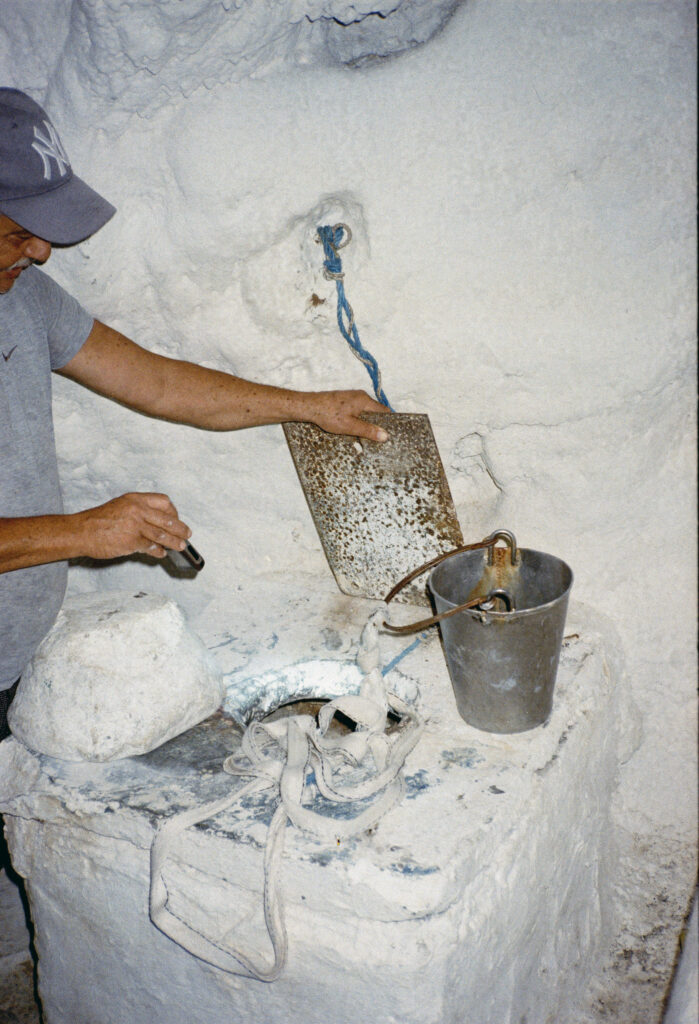
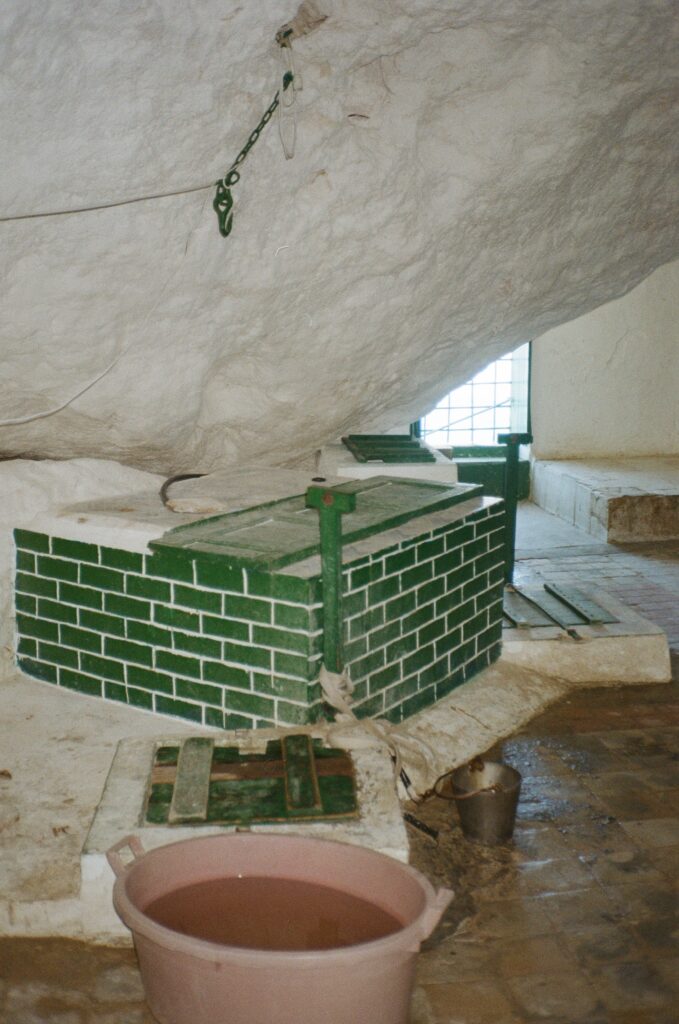
He mentions that he spends more money on the zaouia than he receives for it through donations. He stresses that the zaouia has never been a place to make money or generate income. His views contradict those of his mother and sister who tell me that they would like Instagrammers to visit the zaouia to attract people to visit and donate. When I ask Mohamed what he thinks about their idea he replies, “keep them far away from the zaouia! The moment they come, it’s over. It becomes a business. I would bring them to advertise my business in Coco Beach but the zaouia? Never”. I speak to some of the zaouia’s visitors and they all seemed to agree. They cite peace, silence and contemplation as the main reasons for visiting the zaouia. This conversation got me thinking: to what extent and in what form is commerce and business needed to uphold a sanctuary or to sustain spiritual practice?
If we look back in history when zawaya were still governed as waqf, there were often adjoining gardens or farms through which members of a zaouia could produce foods such as wheat and olive oil. Could Mohamed’s restaurant in Coco Beach be considered a modern day zaouia farm? In this case, a profit-oriented business was ensuring the survival of a spiritual commons.
Plural of zaouia.
A waqf also called a habs or mortmain property, is an inalienable charitable endowment under Islamic law.
With a few friends, we sit in front of the entrance of the zaouia. Glancing at the overwhelming sea view filled with small yachts and boats, we listen to the faint sounds spilling from the speakers of new restaurants that have popped up over the last years along the coast towards Rafraf. “They all pay the police to be able to work at this time of the year” (it’s late October when I visit). You can feel he is not very happy about how the surrounding landscape is changing. Mohamed doesn’t express any complaints, pleads or concerns, except for his frustration about the country’s current political situation and the state of the marine ecosystem. He comes from a family of fishermen and when I ask him how the sea is doing he tells me, “lebhar mayit” (the sea is dead). For him fishing has become but a hobby which can no longer be considered a viable source of income.
The view from Zaouia Sidi Ali el Mekki.
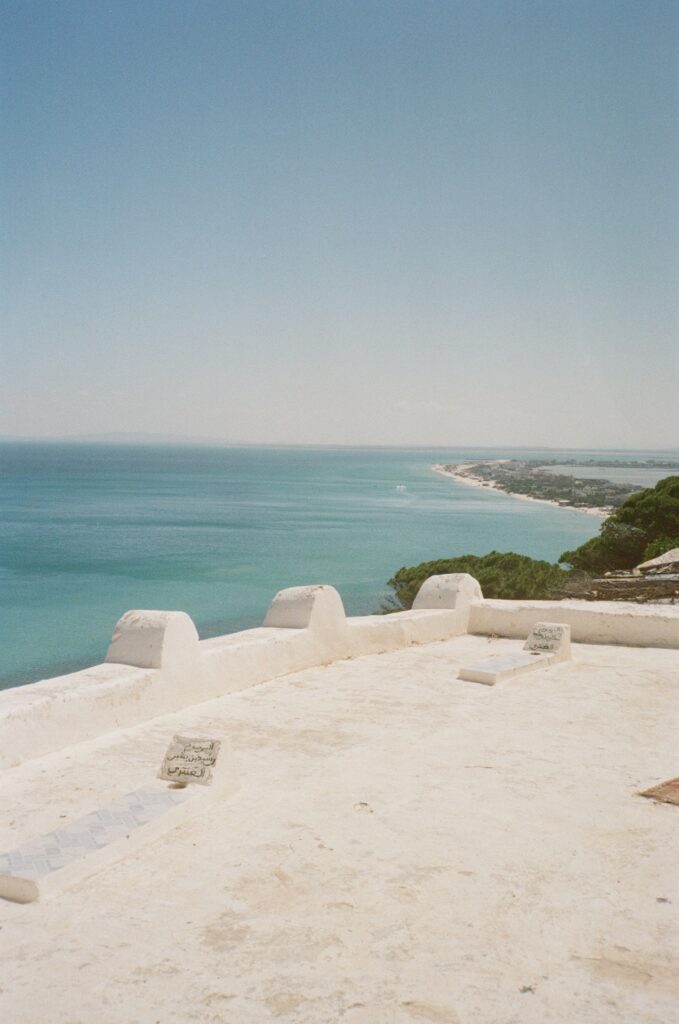
The more time I spend in different zawaya, the moreI become aware of the extent to which we have internalized the state as well as capitalist economic models in our physical, psychological and emotional ways of being. It makes me think of our changing perception of time, devotion, and labour. It also draws my attention to the weakness of the state, in comparison to the zaouia for example, in offering people support in meeting their basic human needs. In certain zawaya, I met people who expected the zaouia to offer them food and relief from poverty and who expressed deep frustration and desperation when the zaouia failed to do so. On my journey towards finding aspects of commoning in zawaya I ended up finding confrontations with capitalism, which felt particularly harsh as they were taking place in spaces of worship, contemplation, meditation where care and generosity are practiced every day. People continue to devote their lives to the zaouia, living on site and caring for the space and its visitors. People continue to gather for dhikr, to share food and wealth, or to simply rest and take a breath or moment for themselves and God in a bustling city or an isolated place.
Dhikr is a form of Islamic prayer in which phrases or prayers are repeatedly chanted in order to remember God.
Thinking back to the words of Iheb Guermazi, the zaouia’s importance and value lies in offering people choice to self-determination, beyond the market/state’s imposed set of predetermined values, emerging as a result of political and economic realities of extractive and colonial nature. As Sufism lives on as a site of resistance to Modernism, the zaouia remains a space where alternative and autonomous forms of social and economic practices persist.
Guiding keywords from Free, Fair, and Alive: The Insurgent Power of the Commons. By David Bollier & Silke Helfrich.
- To relationalize property is to open up a new conception of property that recognizes the social relationships that are inextricably blended into any landscape, creative work, building, or sacred space. (P.149) ↩︎
- Decommodified work: Work in a commons is not a purchased unit of commodified work, aka “labor.” It is an activity that draws upon people’s deep passions and values — their whole selves. Geographer Neera Singh calls this sort of commitment “affective labor” because people show love, devotion, and care — or simply awareness for what needs to be done — when stewarding a forest, caring for elderly parents, designing and curating a web archive, teaching a craft or tending a community garden. (P.169) ↩︎



